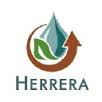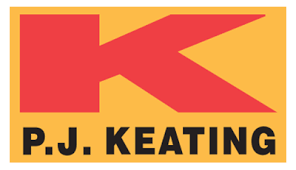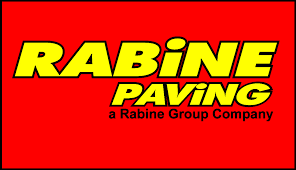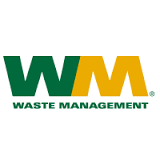News
EPA announces $22.4 million to protect and restore Chesapeake Bay through Investing in America agenda
Jun 25, 2024
PHILADELPHIA – Today the U.S. Environmental Protection Agency (EPA) announced $22.4 million in grants to 13 selectees, through the Innovative Nutrient & Sediment Reduction grant program as part of President Biden’s Investing in America agenda. The 13 grants will leverage $35.3 million in matching contributions to generate a total conservation impact of $57.7 million. This program is currently administered by the National Fish and Wildlife Foundation (NFWF) through a grant from EPA’s Chesapeake Bay Program Office. Over $12.4 million in funding for these awards comes from President Biden’s Bipartisan Infrastructure Law, while the remaining $10 million comes from annual EPA appropriations.
Innovative Nutrient and Sediment Reduction program
The Innovative Nutrient and Sediment Reduction (INSR) program aims to accelerate the implementation of water quality improvements, specifically through the collaborative and coordinated efforts of sustainable, regional-scale partnerships and networks of practitioners with a shared focus on water quality restoration and protection.
Since 2006, the INSR Program has provided more than $200 million to over 250 projects that have reduced 36 million pounds of nitrogen, nine million pounds of phosphorus, and nearly 800,000 tons of sediment across the Chesapeake Bay watershed.
“These grants reflect our continuing commitment to protect the Chesapeake Bay and preserve our nation’s environmental legacy for future generations,” said EPA Chesapeake Bay Program Office Director Martha Shimkin. “It is inspiring to be working with so many awardees who have long been committed to preserving, protecting, and enhancing the Chesapeake Bay and its watershed.”
“A healthy Chesapeake Bay is vital for Maryland’s economy, environment, and the well-being of our families,” said Senator Van Hollen. “With these resources from the Infrastructure Investment and Jobs Act, we continue to foster partnerships to reduce nutrient runoff into the Bay watershed. These efforts both improve the Bay’s water quality and preserve natural wildlife habitat while supporting Maryland farmers.”
“The Chesapeake Bay is at the heart of Maryland’s economy and culture. And as the nation’s longest estuary, its significance is felt throughout the Mid-Atlantic region and beyond. Securing its health and vitality is in all our best interests,” said Senator Cardin. “Through community partnerships and government action, we have made considerable progress in Bay restoration, but there is much more we need to do. While our dead zone is shrinking, urban and suburban runoff into the Bay is increasing and oyster crops are still not even close to their historic levels. With this additional support from the Biden Administration, we can invest in more community-led restoration projects that build on our progress and continue to preserve and protect one of our region’s most important natural resources.”
Below is a list of the selectees:
-- Chesapeake Conservancy, INC. – Accelerating Stream Delisting in Central Pennsylvania
-- Alliance for the Shenandoah Valley – Accelerating Clean Water and Conservation Outcomes in Shenandoah Valley (VA)
-- James River Association – Growing Riparian Partnerships to Improve Water Quality in the James River Watershed (VA)
-- Tioga County Soil and Water Conservation District – Stream Corridor Restoration in the Upper Susquehanna Watershed (NY, PA)
-- Sustainable Chesapeake – Improving Manure and Nutrient Management in the Chesapeake Bay Region (MD, NY, VA, PA)
-- Friends of the Rappahannock – Advancing Climate-Smart Conservation Through Innovation and Collaboration (VA)
-- Conservation Foundation of Lancaster County – Reducing Runoff and Reaching New Leaders in Lancaster (PA)
-- Interfaith Partners for the Chesapeake – Developing Community Partnerships for Green Infrastructure and Equity Enhancement (PA)
-- Alliance for the Chesapeake Bay, Inc. – Sustainable Dairy Partnerships and Corporate Investment in the Chesapeake Bay (MD, NY, PA, VA)
-- Pennsylvania Department of Conservation and Natural Resources – Implementing Forestry Best Management Practices in the Chesapeake Bay Watershed (PA)
-- Alliance for the Chesapeake Bay, Inc. – Increasing Riparian Forest Buffer Adoption Across the Chesapeake Bay Watershed (MD, PA, VA, WV)
-- Trout Unlimited, Inc. – Improving Water Quality Through Riparian Restoration Practices (VA, WV)
-- The Mid-Atlantic 4R Nutrient Stewardship Association – Accelerating Water Quality Outcomes through Stronger Nutrient Stewardship Partnerships (DE, MD, PA)
For more information and a complete list of the 2024 Chesapeake Bay Innovative Nutrient and Sediment Reduction grants recipients, please see: https://www.nfwf.org/sites/default/files/2024-06/nfwf-chesapeake-insr-20240531-gs.pdf
These awards reflect EPA’s commitment to the Chesapeake Bay Program and demonstrate its focus on strengthening partnerships to restore the health and productivity of the Chesapeake Bay. Funding for these programs will empower communities to implement local programs to restore the Chesapeake Bay’s water quality while advancing President Biden’s Justice40 Initiative, which set the goal that 40 percent of the overall benefits of certain federal investments flow to disadvantaged communities that are marginalized by underinvestment and overburdened by pollution.
Background:
The Chesapeake Bay Program is a regional partnership made up of federal agencies, six states, local governments, academic institutions, and non-governmental organizations that lead and direct the restoration and protection of the Chesapeake Bay and its 64,000-square-mile watershed.
Visit the EPA’s website to learn more about its support for the Chesapeake Bay.
Visit the EPA website to learn more about the Bipartisan Infrastructure Law and available funding opportunities.









































































































